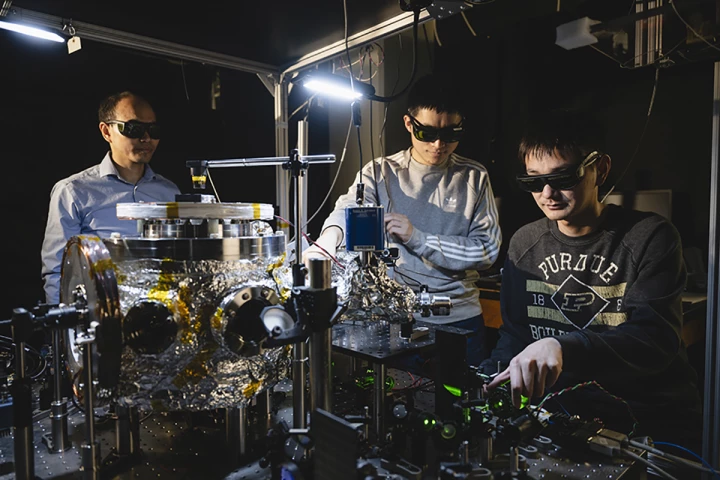Nano
-
Scientists have created a new type of display with the smallest pixels and highest pixel density ever. Individual pixels were shrunk to 90 nanometers – about the size of a virus – and a record 127,000 of them were crammed into every inch of a display
-
Japanese scientists have created what may be the world’s smallest video game. Using a regular controller, players can control a tiny digital ship, firing nanoscale bullets to push around a physical polystyrene ball just a few microns wide.
-
The world's thinnest spaghetti is 200 times thinner than a human hair, which means you'd have a hard time eating it. It's actually a nanofiber developed to help heal wounds. Besides, you'd probably overcook it in a second anyway.
-
Physicists have levitated nanoscale diamonds, hit them with lasers to make them flash and spun them at an incredible 1.2 billion rpm. The experiments aren’t just about creating the “world’s smallest disco” but could help the study of quantum physics.
-
Researchers have demonstrated a programmable nano-scale robot, made from a few strands of DNA, that's capable of grabbing other snippets of DNA, and positioning them together to manufacture new UV-welded nano-machines – including copies of itself.
-
AI machine learning uses so much computing power and energy that it's typically done in the cloud. But a new microtransistor, 100X more efficient than the current tech, promises to bring new levels of intelligence to mobile and wearable devices.
-
Physicists have combined nanotechnology, artificial intelligence and molecular biology to design a novel method that can detect Alzheimer’s disease protein markers in blood that are the tell-tale signs of early neurodegeneration.
-
For the estimated 800 million people worldwide with acne, a successful new treatment would have a profound impact on quality of life. Scientists hope their new treatment method, using a drug that's unique in human medicine, will be the 'magic bullet.'
-
Researchers have developed a new open-source program that can convert drawings or digital models into nanoscale sculptures made of DNA. In tests, the system nailed rounded objects like vases and bowls.
-
Researchers at the Technical University of Munich (TUM) have developed the world’s first electric nanomotors made of DNA. The self-assembling structures can be activated by an electric charge to spin a ratcheting rotor arm.
-
In many fields of technology, smaller is better, and machinery is now getting so tiny it’s measured in mere atoms. Researchers at the University of Erlangen–Nuremberg in Germany have now developed the world’s smallest working gear wheels.
-
Researchers have developed a simple new way to make material surfaces with intricate nanoscale textures, all inspired by nature. Different patterns have a range of applications, like making antimicrobial surfaces or reducing ship hull friction.
Load More










